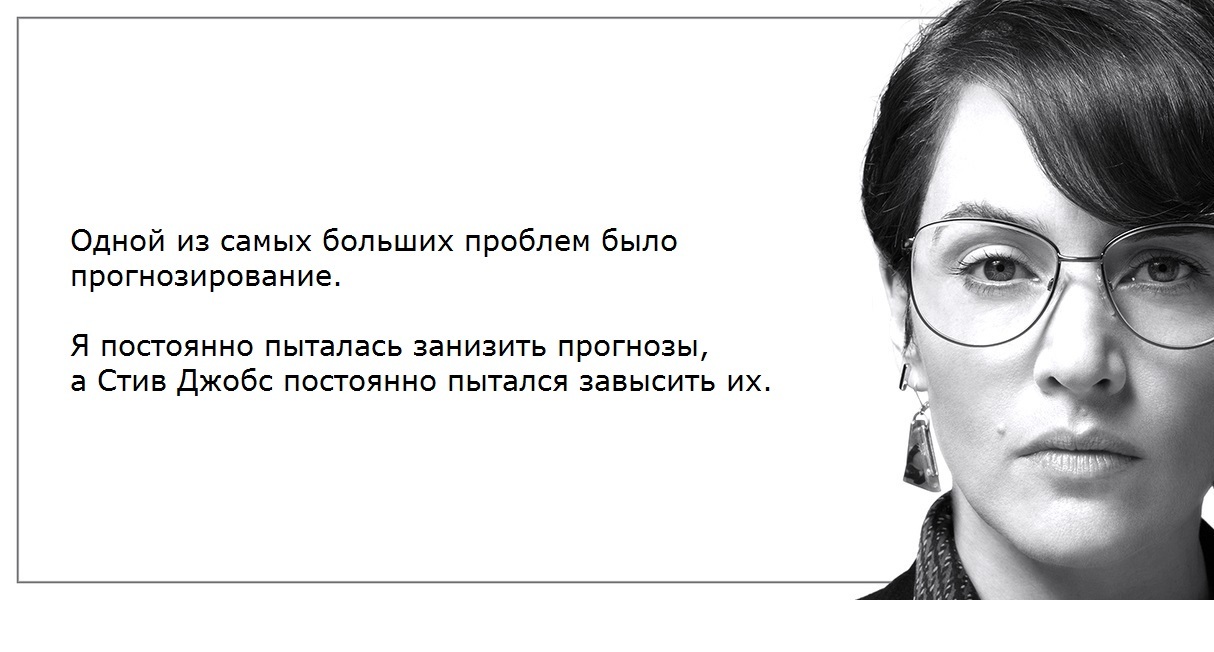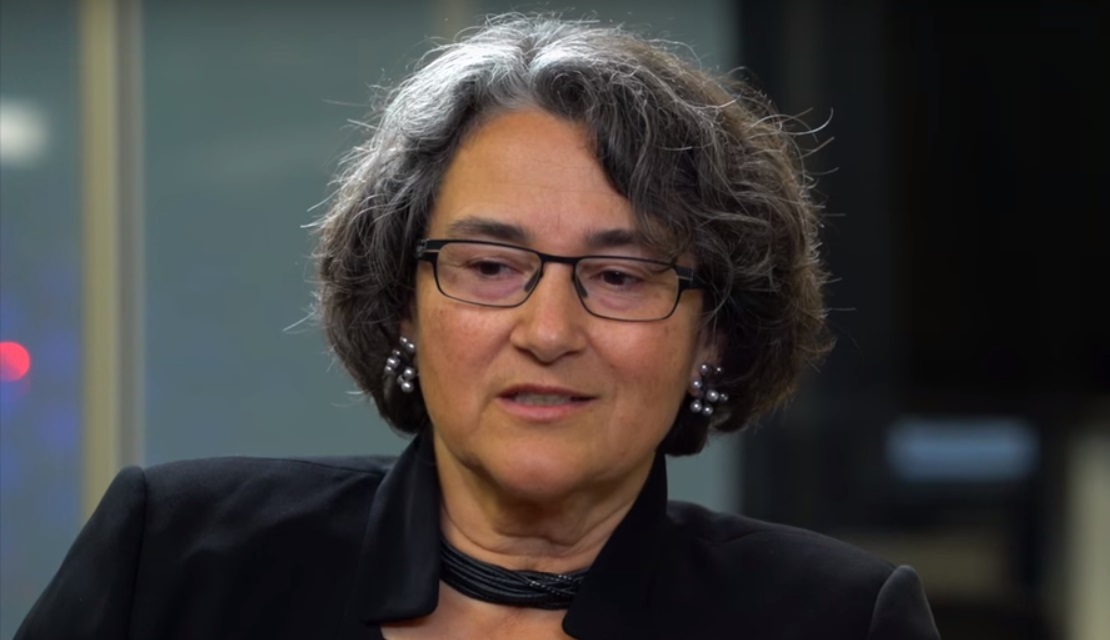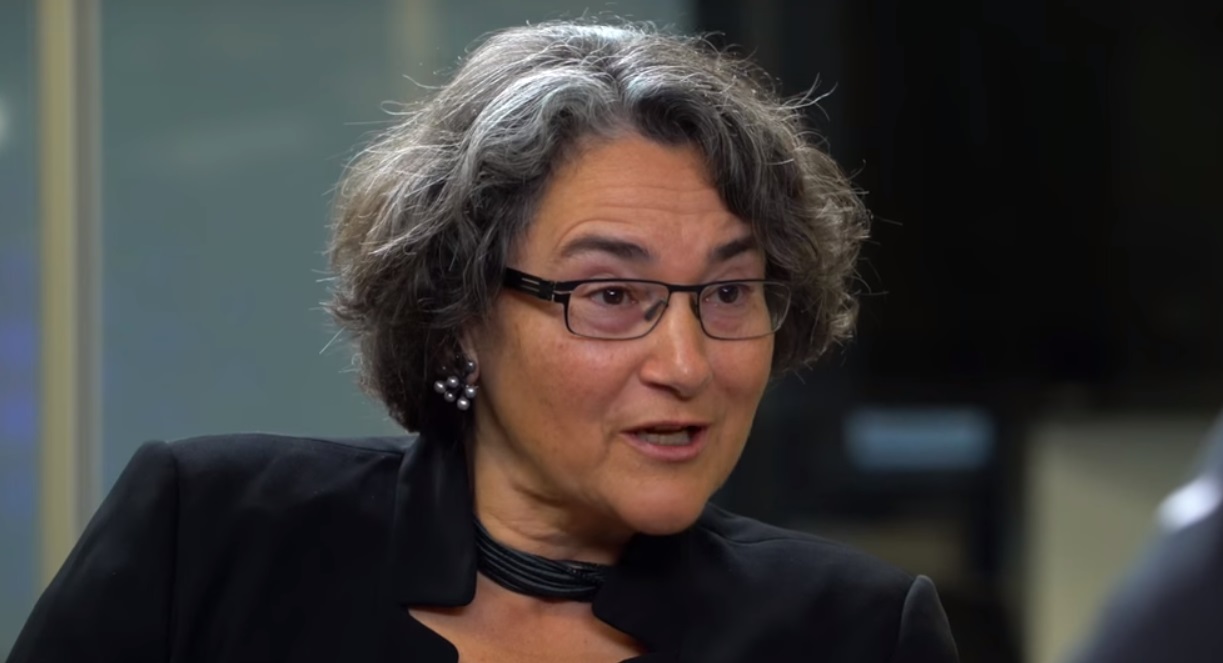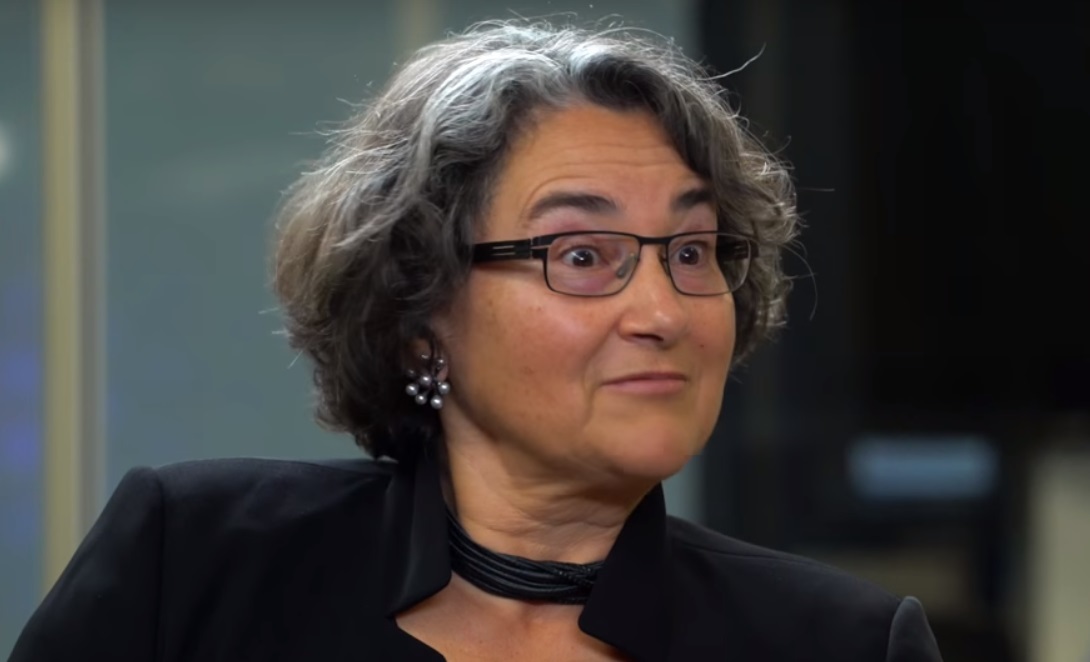Joanna Hoffman - Steve Jobs's “Guardian Angel”

I really respect Steve Jobs. Especially shaggy and young, a rebel of those times when the apple was colorful and rosy
 rather than gray.
rather than gray.Recently I watched another Steve film and was fascinated by the main
Guy Kawasaki interviews Joanna Hoffman
“So, Joanna Hoffman.” Tell us what your role was on the Macintosh team.
')
- Look. When I was first hired (it was Jeff Raskin in 1980), I had to work on testing the user interface and its design for the Macintosh, which at the time was an Apple research project. Soon after I joined them, Steve Jobs came in, took this project and decided that this should be the next Apple product. And everything changed. He outlined what the engineers did, what the code writers did. You know, there were only five of us at that time. And we were going to find out what I should do, because he had already decided which interface should be.

- What year was it?
- It was the 1980s. So, he looked at me and said: "You will be engaged in marketing." I thought, “Marketing ... What is marketing?” So I had to learn quickly. The first thing I did was to write the original business plan, which he submitted to the Board of Directors and administrative staff to get funding for the unit. Then there was the first marketing plan, then the first user manual. Because, you know, I had to be a jack of all trades, until they hired someone for each of these positions, real professionals, unlike me. Anyway, that was my job. And then in the end I headed educational marketing, then international. And then I spent my last year at Apple in launching Macintosh product lines, that is, following Macintosh, where the built-in hard drive was supposed to be, and then moving away from Lisa. My roles at Apple were so different.

- Can you say that you are the mother of Macintosh?
“I don’t know, Macintosh mother ... There were so many people who invested in it that I don’t think I can call myself the Macintosh mother.”
- What is your favorite story about Steve Jobs? I know you have dozens of them.
- One of those that came to mind happened when we presented Macintosh in Europe. Steve and Barbara, we went from country to country to do a Mac presentation. IBM announced a partnership with AT & T and, of course, wherever we went, people asked us what Steve Jobs thought about it. And when we were in the UK, someone from the press asked him this question, and in the end he was tired of it. He said: "You know, AT & T is like a thirty-year-old virgin, which means that they are ready to jump into bed for the first comer." But this is not the end of the story. When we made a presentation in London, Margaret Thatcher decided to hold a reception for industrialists from the UK and the USA. And it turned out that Steve was there, so he was invited to this reception. People were taken to the reception by car, and we stood at the curb with Steve, waiting for the car to arrive, which will take him. And a limousine drives up, the door opens, and inside Charlie Brown, the chairman of AT & T. It so happened that they had to go together. When Steve sat down, the first thing Charlie said was, "So, Steve, AT & T looks like a thirty-year-old virgin?" But this is one of my favorite stories.

- It's a great story.
- Other stories were related to predictions, clashes with Steve because of them. You know it well, he was enthusiastic and always so fascinated by his products that sometimes his predictions were unrealistic. So it was a whole way from delightful predictions to reality and it took several repetitions. It has always been so, whether it is the characteristics of the product or discussion.

“You are at this meeting, you, HBS, as I call it, women hired by Steve.” And this is in the eighties. My opinion is that Steve was ahead of time. I don't think he was cared for by gender, religion, race, sexual orientation, none of this. Only you are good or shit. This is my impression. What do you think?
- Of course. I fully agree with you that there have never been any problems, we were all members of the team, we were all together and there were never any issues with any of the nuances that you listed. We have always been members of the team. And by the way, I want to correct you: only you are good or a fool. You were never shit, shit was what you did. Maybe what you produced was shit, but you were a dummy. He never called it that.
- That is, idiot or well done.
- Blockhead or well done. But no, for Steve, it didn't matter who you were when you reached out to his expectations. And, by the way, his expectations in relation to himself were very high. He was so energetic and he could keep this incredible level of enthusiasm for the future all the time, about the subsequent things he did. And he expected from everyone else to achieve these opportunities and the same amount of energy. And not everyone had such a reserve of strength, but it was, I think, it is not clear for him that others cannot do what he can.
- Wonderful! Thank you for the priceless story, thank you for being with us.
- Thank you, it's so wonderful to see you.
- There were days!
- Yes, every time I see you, I feel at 28 again.
- But not a virgin, ha ha ha.

Apple Steve Jobs and Startup Culture
“Apple III was a great product, but very unfortunate. Apple II was unexpectedly very successful and it was done by engineers: marketers were engineers, all were engineers. Apple III should have been more professional. But they decided to hire marketers from the consumer business and took those who sold tampons and soap. And these people completely destroyed the whole product, which could be successful. And there was one day called Black Wednesday. The president of the company, who at the time was Mike Scott, came with a large bottle of whiskey, stood in front of everyone and read out the names of those who were fired. They understood that they hired the wrong people and fired everyone. ”
“Steve could not find a place in Apple. They thought they were professionals and they didn’t need someone like Steve. Despite the fact that he was the head of the company, he had no project, so he began to look around, what else is going on inside Apple, discovered the Macintosh and so it all began. ”
“We were very innocent. The hardware engineer was expelled from the school, not even a college, but a school, worked in the Apple service department and was not an engineer before. The head of the software department received a doctorate in medicine from the University of Washington; he was a neurosurgeon. And Jeff, who was a musician, programmer, professor of Pascal at the University of California, was a jack of all trades. And this was my first real job. We were full of newbies and were learning what to do just by doing it. ”
“We built our own factory to make Macintosh. But we did not have a person who could be engaged in production. We conducted interviews, you can not even imagine, with people from GE, from General Motors, with the best in the United States. Each of them lasted a month or two and was fired because he had no idea what to do. In the end, Steve went to the head of the finance department, who received a degree in English literature and an MBA, and said, "Debbie, do you think you can take up production?" Debbie thought and replied, "I am from a large Catholic family, I think do production. Debbie essentially built a plant that Macintosh had been producing for many years before production was transferred abroad. She was the same age as me, maybe 26 or 27. "
“The other person we cannot fail to mention is Susan, our artist. She handled all the graphics on the original Macintosh. Interestingly, people who worked on raster fonts in various prestigious organizations saw what Susan did and were amazed at what was theoretically impossible - the smoothness of the fonts she achieved in such a resolution. But since she was an artist and never read these documents, she did not know that this was impossible and she did it. ”
“We wanted the Macintosh to be easy to use. For example, in Apple II, if you were in a text program, Ctrl + Z meant “save”, and in the table, Ctrl + Z meant “erase”. This is just a small example, but each program worked in its own way, each time you had to memorize something new. In Macintosh, we put it in ROM and third-party developers could not use it in their own way. We decided that we would soon turn to them for creating applications and realized that we have no documentation. So I took the Sony Walkman, turned on Mozart and spent two nights describing all the ways applications can be made and those that cannot. It was the first user interface guide. But then we hired a real writer, Caroline Rose, and she became the hero of all the developers because she did all the technical documentation and every company wanted Caroline to write for them. ”
“Macintosh was supposed to be released in January 1981. It came out in January 1984. In the Valley, there is a saying that all startups are dying from indigestion and overeating. This means that they are trying to do too much. This is certain death. The reason we were so late was because we were trying to do too much. I was young and just as guilty of this as the engineers who came all the time and said, "Let's add it, let's add something." It fascinated me, and they said: "The marketer said that everything is fine."
“Maybe it's the optimism of youth, but I never thought that the Macintosh might not succeed. I thought only that it might take time. One of the biggest problems was forecasting. I was constantly trying to lower the forecasts, and Steve Jobs was constantly trying to inflate them. So we fought all the time about this. I thought, “Okay, at least I can predict reasonably for the territories I control.” I distributed our forecasts to all countries and behind my back Steve Jobs called them and said: "I will not give you our product if you do not raise your forecasts five times." I suddenly get them, call and ask: "What the hell is going on?", And they: "Steve said that he would not give us anything if we did not raise our forecasts." So this was one of my biggest challenges - let's be reasonable, let's be at least a little reasonable. By the way, our international forecasts turned out to be practically accurate, while in the USA, unfortunately, it was about five times smaller, which was the cause of the problems of 1985-86. ”
Computer Chronicles: The Macintosh Computer 1985
“Joanna was part of the original Mac design team and is now in charge of marketing.
- We are now at that stage in the industry, when we have processors like the Motorola 68000 and Intel 286, megapamy as standard, we have high-resolution graphics like in Macintosh. And this leads us to a completely new software level, where graphics are a very important component of applications. Joanna, what was your group’s vision for mainstream Mac apps?
“We knew that we essentially made clay, from which everything else would arise.” We created raw materials so that people could build on and make phenomenal applications in the future. If you think about the history and look at the Apple II, for example, you can get an idea of the emergence of products such as Visicalc or Appleworks and similar things working on this small machine.
- You say that you create a tool, but are you sure for what?
“We knew that maybe this would lead to the next generation of software, but we didn’t know to what extent how quickly these things would come. For example, Filevision was something we could not predict. What we hoped to do was provide enough tools within a very simple user interface, clearly defined, built into the system, so that software developers have everything to access. The whole essence of the machine was to make it not only extremely powerful and useful, but also extremely easy to use.
“These applications we are talking about use graphics where we couldn’t use it before.” You have one example here, can you show us?
- Yes, this is the Macintosh Project for example. All those involved in project planning understand that there are many, many components for planning. And this thing helps a lot to visualize everything visually, in graphic form right in front of you. Sometimes, when you come to corporate planning centers, you see walls covered with papers with project plans. On the Mac Project, you can do it right on the screen. For example, here we have a development project, planned taking into account resources and schedules. And you can easily see his progress, all the steps are sketched. If I want to say that something becomes the main stage, I can easily come and change a certain stage here. And now in the project they know that this is something that absolutely must be before something else is completed. This is very visual and you can add things and plan.
- This is a good example of what can not be done on the teletype.
- Of course. But there are still many different representations of the same project, for example, you can look at it differently and see how everything falls out of the schedule and so on.
Translation: Katya Shershneva from the Summer School
Publishing support - Edison , which develops an online database of real estate , as well as designs and develops software for industrial scales and calibration equipment .
Source: https://habr.com/ru/post/312780/
All Articles